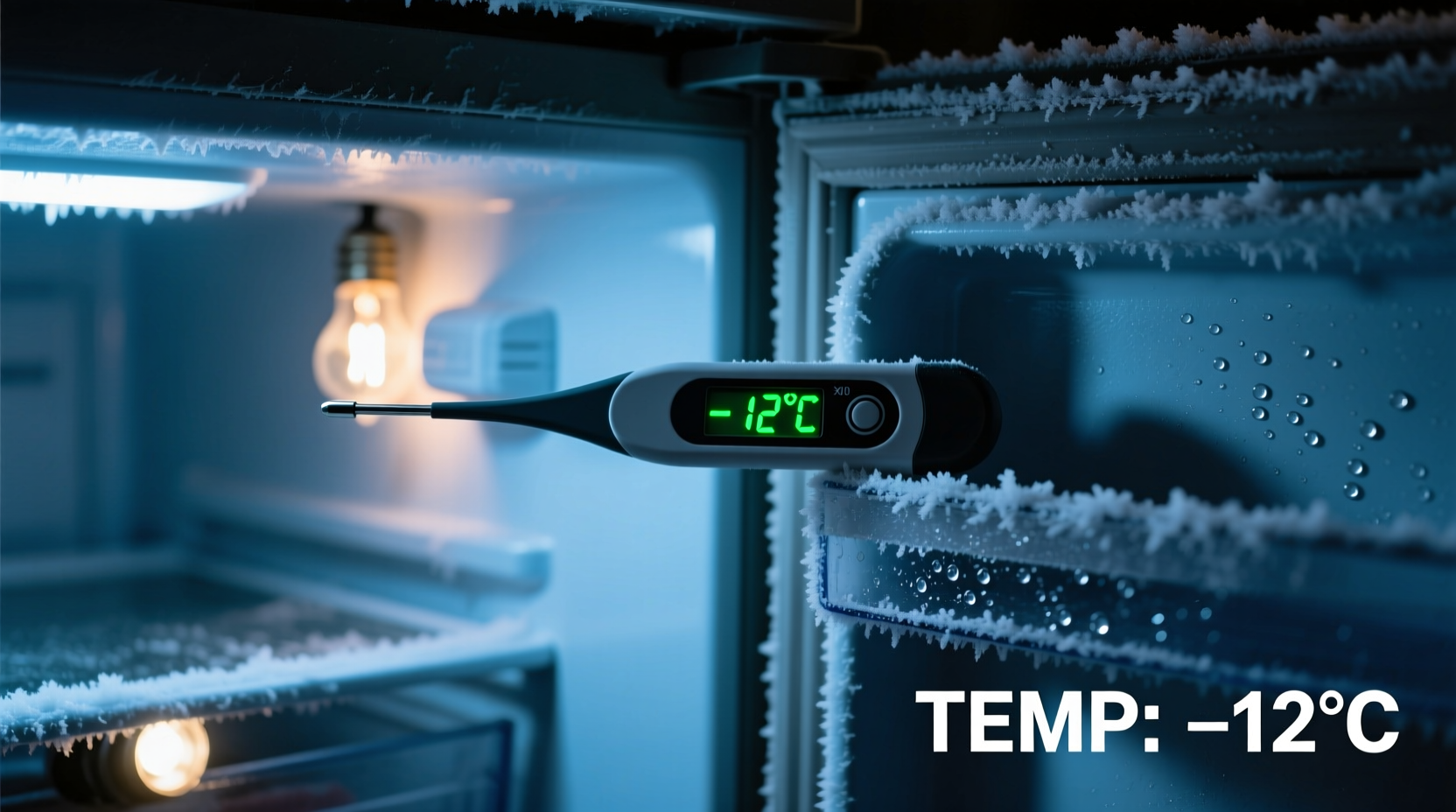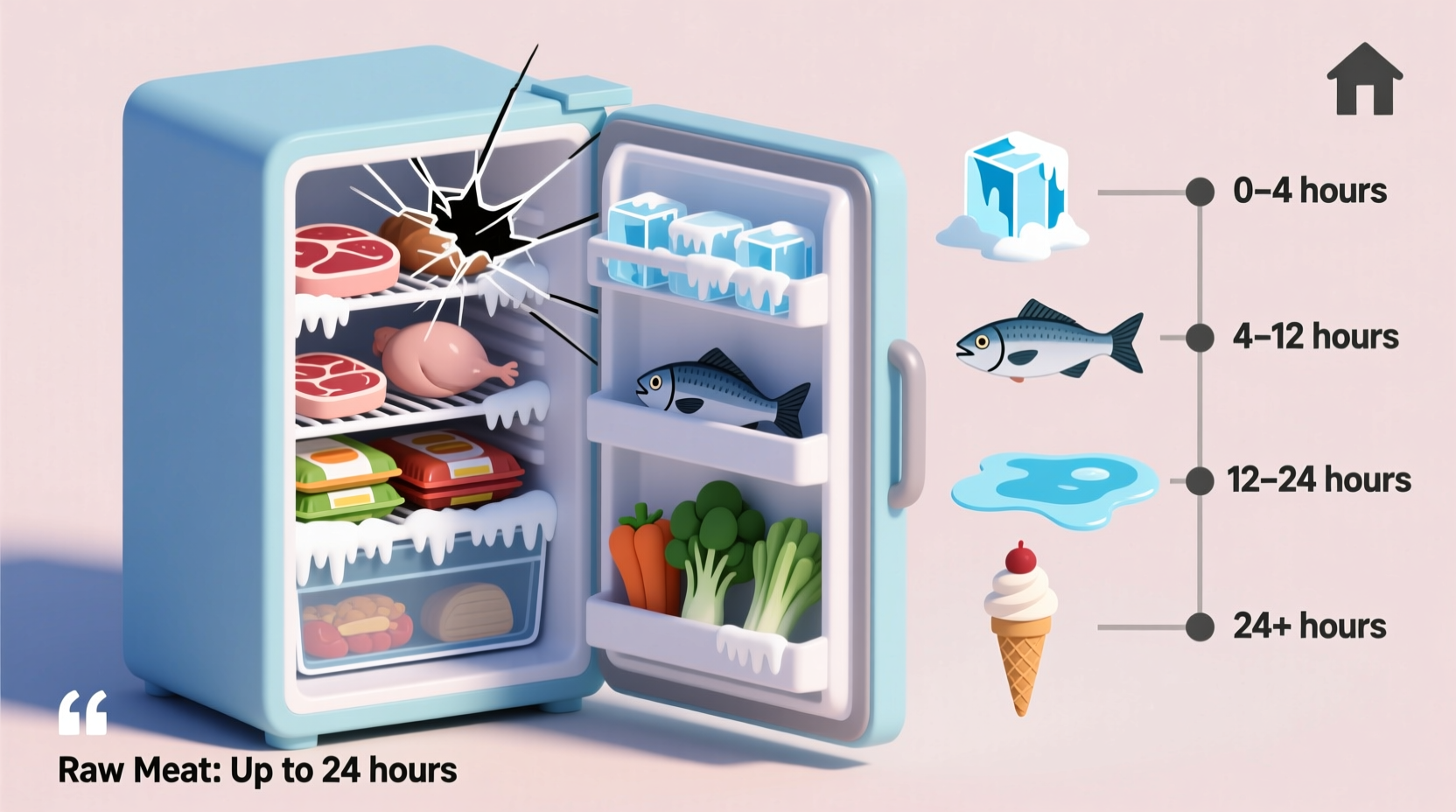When the power goes out, your freezer becomes a temporary time capsule for your food. Understanding exactly how long is food good in a freezer without power can prevent both food waste and potential foodborne illness. This guide delivers science-backed information you need to make informed decisions during power outages.
Immediate Actions When Power Fails
The first 30 minutes after a power outage are critical for preserving your frozen food. Follow these steps immediately:
- Keep freezer doors closed - Every opening raises the internal temperature significantly
- Check your freezer thermometer - If you don't have one installed, consider this essential equipment
- Add ice packs or dry ice if outage is expected to be prolonged (use 25-50 pounds of dry ice per day for a standard 20 cubic foot freezer)
- Group packages together to help them stay cold longer
| Freezer Condition | Safety Duration | Maximum Temperature |
|---|---|---|
| Full upright freezer | 2 days | ≤ 40°F (4°C) |
| Half-full upright freezer | 1 day | ≤ 40°F (4°C) |
| Full chest freezer | 3-4 days | ≤ 40°F (4°C) |
| Half-full chest freezer | 1-2 days | ≤ 40°F (4°C) |
Key Factors That Determine Food Safety Duration
Several variables affect how long frozen food stays safe without power, making simple timeframes insufficient for complete guidance:
Freezer Type and Insulation Quality
Chest freezers typically maintain cold temperatures longer than upright models due to better insulation and the cold air sinking principle (when opened, cold air doesn't spill out as easily). According to USDA Food Safety and Inspection Service data, "a chest freezer can keep food safe for 3-4 days when full, compared to 2 days for an upright model." Source: USDA FSIS
Ambient Temperature Conditions
The room temperature where your freezer is located dramatically impacts food safety duration. During summer months or in unconditioned spaces like garages, food may reach dangerous temperatures much faster. Research from the University of Minnesota Extension shows that "in 90°F (32°C) ambient temperatures, freezer contents may reach unsafe temperatures in half the time compared to 60°F (15°C) conditions." Source: University of Minnesota Extension
Freezer Organization and Contents
A fully stocked freezer maintains temperature better than a partially empty one. Large items like turkeys or blocks of ice freeze slower but stay frozen longer. The FDA Food Code emphasizes that "the density and arrangement of frozen items directly affects thermal mass and thus safety duration during power loss." Source: FDA Food Code 2022

How to Assess Food Safety After Power Restoration
When power returns, don't simply assume all food is safe. Follow this assessment protocol:
- Check internal food temperatures first - Use a food thermometer on multiple items
- Examine ice crystals - Food with remaining ice crystals is generally safe
- Assess texture changes - Foods that have completely thawed and refrozen may have texture issues but can still be safe
- Smell test as last resort - Many dangerous bacteria don't produce odors
When to Discard Food: Clear Safety Guidelines
Follow these specific criteria to determine how long is food good in freezer without power before discarding:
- Discard immediately if food has been above 40°F (4°C) for more than 2 hours
- Throw away any food with visible mold or unusual odors
- Discard raw meat, poultry, fish, and seafood that have completely thawed
- Keep breads, cookies, and fruits which may lose quality but remain safe
The CDC reports that "approximately 48 million people get sick from foodborne illnesses each year in the United States, with improper handling during power outages contributing to preventable cases." Source: CDC Foodborne Diseases
Practical Tips to Extend Food Safety Duration
Implement these strategies before and during power outages to maximize how long your food remains safe:
- Pre-freeze containers of water to create additional thermal mass
- Use freezer organizers to minimize door opening time
- Install a freezer alarm that alerts when temperatures rise
- Consider backup power options for extended outages
- Keep a log of freezer temperatures to establish baseline cooling patterns
Special Considerations for Different Food Types
Not all frozen foods have the same safety thresholds when power fails:
- Meat and poultry: Discard if completely thawed and above 40°F for more than 2 hours
- Dairy products: Ice cream and frozen dairy desserts should be discarded if thawed
- Vegetables and fruits: May be safe even if partially thawed but will lose texture
- Baked goods: Generally safe for longer periods with minimal quality loss
Planning for Future Power Outages
Preparation significantly extends how long food remains safe during unexpected power failures:
- Maintain a freezer thermometer at eye level for quick checks
- Keep emergency contact numbers for local food safety authorities
- Store dry ice safely in well-ventilated areas (never in sealed containers)
- Develop a family food safety plan for extended outages











 浙公网安备
33010002000092号
浙公网安备
33010002000092号 浙B2-20120091-4
浙B2-20120091-4